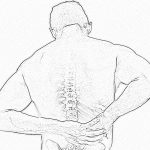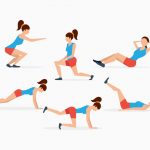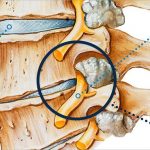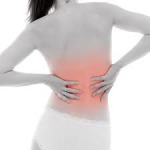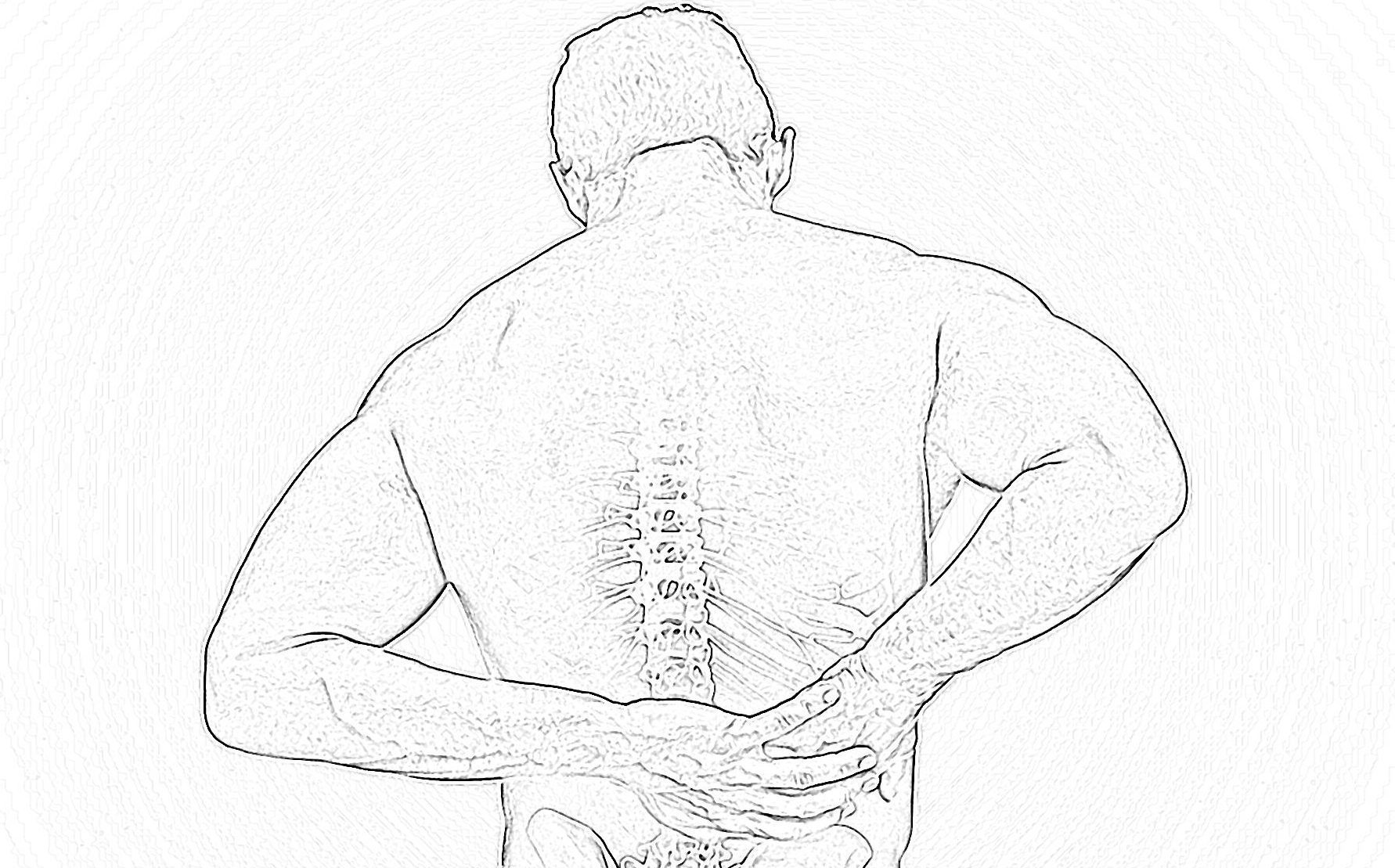Mid Back Pain & Thoracic Pain
Lower, upper and mid back pain is among the most common medical complaints in the United States. More Americans miss work or visit the doctor for back pain than for any other ailment. According to reports from the National Institutes of Arthritis and Musculoskeletal and Skin Diseases (NIAMS), one in four adults suffer at least a day of back pain in a three months period. Luckily, there are lots of different exercises you can do to treat a different kind of backache.
Middle back pain can affect almost anyone and many factors contribute to the suffering. Regardless of how it occurs, people know that when it happens. Those who have never had back pain will likely experience it eventually.
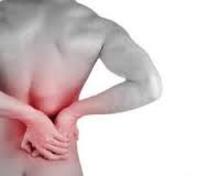 What is Middle Back Pain?
What is Middle Back Pain?
It can be a mild, dull ache or a sharp burning sensation. It occurs midway down the spine in the general vicinity of the rib cage. Called the thoracic spine, this region of the spine is the longest part of the back.
The thoracic spine has twelve bones called vertebrae that attach to the rib cage. Also attached to the sternum, a flat bone in the chest, the rib bones wrap around the back. They form the core of the human skeleton and protect the heart, lungs and other vital organs. Sometimes it can be only on the left side or only on the right side.
Discs of soft, connective tissue separate the thoracic vertebrae and absorb the shock created by movement. Spine muscles and ligaments hold everything together. Spinal nerves carry signals from the spine to the other parts of the body. If a thoracic nerve becomes injured or pinched, it can cause stress in the middle of the back. It may also travel to the arms, legs, chest or abdomen and anywhere the irritated nerve travels. While it rarely indicates a serious medical condition, intense or persistent middle back pain may require medical treatment.
Pain in the mid part of the back is not as common as upper or lower back pain. The bones in the middle back do not move or flex as much as those in other areas of the spine. The ribs help keep the thoracic spine stable.
What Causes Middle Back Pain?
Often, it’s a symptom of another medical condition and not a medical diagnosis itself. Like other types of back pain, thoracic spine issue is often due to muscle or ligament injuries. Sudden or awkward movements can cause muscle strains or ligament sprains. If the back is stressed, muscle spasms, tension and backache can occur.
Ruptured or herniated discs can also contribute to middle back pain. Spinal discs serve as cushions between the individual spinal vertebrae. Sometimes jelly like the center of a disc can bulge or rupture. If it presses against a thoracic nerve, it can cause distress. In some cases, thoracic pain is due to certain acquired diseases or conditions. Skeletal irregularities such as scoliosis can hurt in middle age. Osteoarthritis (OA), rheumatoid arthritis (RA) and other arthritic conditions can also affect the middle back.
Spinal stenosis, a condition that causes the spinal column to become narrow, can also cause mid back pain. The porous, brittle bones of osteoporosis can cause compression fractures that lead to backache. According to WebMD Medical Reference, other conditions are rare causes of the backache. Nevertheless, they exist. Gallbladder disease, cancerous tumors and infections that affect the vertebrae are three examples. You can read more about other possible causes of backache, right here!
What Are the Risk Factors?
Anyone can develop it which includes children, teenagers and adults. However, several factors increase the risk of experiencing middle back pain. Age is a common risk factor, although it first strikes most people in their 30’s or 40’s and it grows more common with age.
Physical fitness also plays a role in the development of mid back pain. The thoracic injury is more common in people who are overweight and not physically fit than in those who are lean and in shape. Weak muscles in the back and abdomen cannot support the spine effectively and often result in torment.
According to the NIAMS, “weekend warriors” are more likely to suffer middle back injuries than people who make exercise a daily habit. Studies show that low-impact aerobic activities support the spinal discs that cushion the back bones. An inactive lifestyle can also lead to obesity which puts additional stress on the back.
Sometimes, many people develop upper, lower and middle back pain due to occupational risk factors. A job that requires pushing, pulling, twisting or heavy lifting can injury the back and contribute to the recurring strain. People who sit too long at a desk job can develop poor posture which can lead to the backache.
Mid Back Pain Symptoms
People with middle back pain may experience a number of symptoms. Among them are muscle aches and stiffness or intense, sharp twinge in the thoracic spine. In some cases, strain and weakness extend to the arms or legs.
Serious backache can cause tingling or throbbing sensations in the arms, legs, chest or abdomen. Sometimes the soreness accompanies bladder or bowel incontinence. These symptoms along with back swelling, unexplained weight loss and necessitate medical attention. They may signify an underlying medical condition.
Tests, Scans and Diagnosis
The Mayo Foundation for Medical Education and Research says that back pain rarely requires confirmation through diagnostic tests. People know when they have back problems. However, certain assessments can help doctors determine the location and cause of problem. These tests may also rule out serious medical conditions.
In order to determine the cause of mid back pain, doctors normally start with a medical history and physical exam. During the exam, they ask the patient to sit, stand and walk. They also check the reflexes. In addition, they check for muscle strength, nerve irritation and tender points.
If they suspect an underlying medical condition, they order additional tests to confirm a diagnosis. The most common diagnostic tests for backache include X-rays, magnetic resonance imaging (MRI), computerized tomography (CT) scans, bone scans and nerve studies using electromyography (EMG). In some cases, doctors also order blood tests to check for blood counts, genetic markers and other measures.
Home Treatments and Self-Care
Fortunately, most middle back pain improves within a few weeks of home treatments and self-care. This is particularly true for acute strain. Chronic issues usually require additional treatment or therapy.
Over-the-counter analgesics like acetaminophen and aspirin are often effective for back problems. Ibuprofen and naproxen known medically as non-steroidal anti-inflammatory drugs (NSAIDs), provide non-narcotic and non-addictive strain relief.
Hot and cold therapy such as heating pads and ice packs are soothing treatments for sore and stiff backs. Used alone or in combination, these therapies reduce swelling in thoracic spine injuries and help numb the twinge.
Acute back injuries benefit from a few days of bed rest. However, light activities can help speed recovery for people with chronic back problems. Relaxation techniques can ease stress related issues.
Medical and Surgical Treatments
If conservative measures fail to improve mid back pain, doctors can prescribe stronger drugs. Muscle relaxants, low-dose antidepressants and narcotic pain relievers are common prescriptions for the back injuries. Cortisone injections are usually reserved for the strain that does not respond to medications. You can also read about other treatments here.
Surgery is rarely needed for thoracic spine treatment. People who have constant or recurring pain that interferes with sleep and daily activities are the best candidates for back surgery. The surgery is more predictable for those with lower back pain and sciatica than for other types of backache. Other conditions that may require surgery include ruptured discs, spinal stenosis and fractured vertebrae.
Alternative and Complementary Treatments
Some people prefer to take a holistic approach to back soreness. According to the National Center for Complementary and Alternative Medicine (NCCAM), a number of therapies can provide symptom relief. While they cannot repair injuries or cure strain causing diseases, they are often helpful for back stress management.
Chiropractic care is one of the most popular complementary and alternative medicine (CAM) therapies. Back pain is the most common reason people visit chiropractors. Spinal manipulation, performed by chiropractors and osteopathic doctors, involves a manual adjustment. They align the back and stimulates the surrounding muscles and tissues.
Transcutaneous electrical nerve stimulation (TENS) is another popular alternative therapy for mid back pain. It involves the direction of mild electrical impulses to the thoracic nerves. TENS may also raise the level of endorphins, “feel good chemicals” that provide natural strain relief.
Some people turn to acupuncture and acupressure for middle back pain. These ancient Chinese practices use needles or pressure to improve the flow of energy through the body. According to theory this relieves strain and restores well-being.
Massage is another CAM practice that complements conventional treatment. Using various pressures and depths, massage relieves the muscle tightness that can sometimes worsen mid back pain. Many hospitals and clinics offer massage therapy for their back patients.
Physical Therapy and Exercise
Physical therapy is the foundation of any back pain treatment. The therapists and chiropractors use heat, electrical stimulation, ultrasound and flex-and-release techniques to treat the pain. They can also teach effective exercises for the thoracic spine.
Medical experts do not recommend back exercises for acute pain. However, certain exercises can ease chronic pain in the middle back. Flexion and extension exercises as well as stretching and aerobics improve flexibility, strength and posture. Regular exercise may prevent further back pain.
Middle Back Pain Prevention
In the most common cases, mid back pain can be prevented. People can reduce the pain by improving their physical condition. Weight loss, a healthy diet and regular physical exercise strengthens the back and keeps it strong and healthy.
Using proper body mechanics of sitting, standing and lifting the right way can also prevent back pain. Some people benefit from special shoes, corsets, braces and other back supports. The right mattresses and sleep pillows can prevent back pain as well.
Ongoing Research and Studies
The National Institutes of Health (NIH) supports scientific research on all forms of back pain including low and mid back pain. According to NIAMS, the most recent studies are focusing on surgical versus non-surgical treatments. One study, in particular, is comparing these treatments for three diagnoses such as herniated discs, spinal stenosis and a degenerative spine disease called spondylolisthesis.
The government supported research is ongoing for lower, upper and middle back pain. The current goals are to better understand back pain and identify back pain prevention methods. Also, improve medical and surgical treatments and prevent disability in those who suffer from back injuries.
Conclusion
It is a common complaint but people can take measures to prevent its occurrence or lessen the strain. If these measures fail to prevent pain, simple home remedies can often heal the back in a matter of weeks. Physical therapy, exercises and alternative practices can keep the back functional for the long term. Medical and surgical treatments are rarely needed for back pain but they are available for those who require them.

